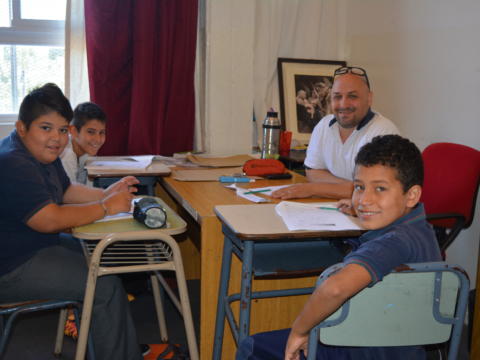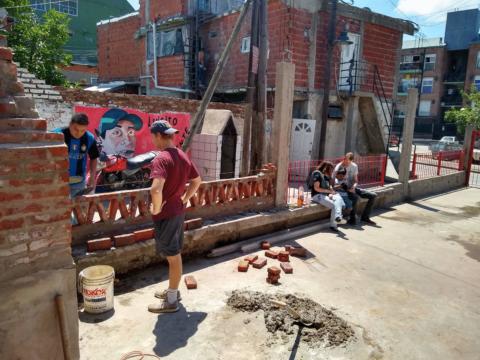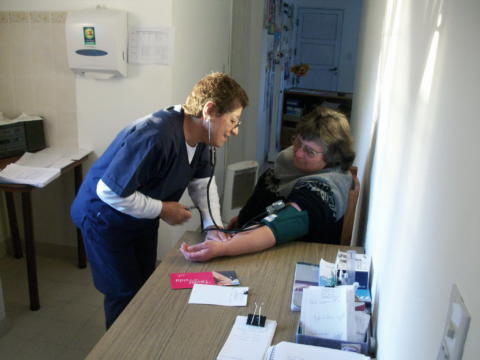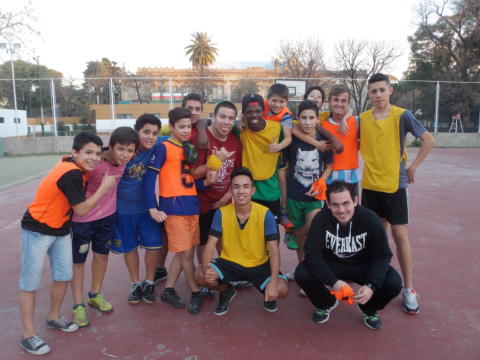Only 480€ per week!
Restoration Effort
Buenos Aires - Argentina
Work in light renovation and construction activities that will improve the living standards of the villagers nearby!
This project asks you to get your hands dirty doing light construction work, repairs and renovations for the local community. We continuously scout the village surroundings for homes, schools, churches and clinics that need work to be done, all while interacting with the local people and learning new things about their culture every day!
Program Description
Many of the villagers here need help with renovation and light construction. The little they earn goes towards their daily expenses, so it is common for their living quarters to be left in bad condition for long periods of time. This is especially the case with some of the homes belonging to refugees in the area.
This situation extends to communal areas such as schools, churches, and clinics too. They are usually in need of more funding and their maintenance budget tends to be very small or not considered a priority.
This is where we saw a way to help!
By providing materials for repair, renovation and light construction, and using labour from our participants, we are able to assist the community. At the same time, we provide an opportunity for you to engage with the community and learn more about them firsthand, as you complete these construction tasks. It is a mutually beneficial exchange!
Our project coordinator will find the most suitable and more urgent work needed for you. Usually this will mean housing renovation and light construction like painting. Other typical tasks could be repairing chairs, tables, building walls, toilets, tiling, roof repair etc.
Tasks will depend on local conditions and what is needed at the time, but you can expect to be working 4-5 hours a day.
Aims & Objectives
- Assist the area with construction and renovation efforts in an organized team
- Create cultural exchange opportunities through our efforts with the locals
- Develop your teamwork and skills through hands on activity
Schedule
Monday to Friday
A typical day during this program may look like this:
- Breakfast
- Briefing
- Working in the placements
- Lunch break
- More work in the placements
- Evaluation (on fridays)
- Dinner
Note: This schedule can be changed and/or amended depending on weather conditions, local conditions and unforeseen circumstances.
Participant Criteria & Requirements
Standard Requirements
Minimum age: –
Maximum age: –
Minimum English level: Basic
CRB required: On Signup
Passport copy required: No
Resume copy required: No
Required qualification: None
Additional Requirements
There are no further requirements for this program.
Additional Equipment
No additional equipment required.
Location
Buenos Aires is the capital and largest city of Argentina, and the second-largest metropolitan area in South America. As a top tourist destination, known for its European style architecture and rich cultural life, Buenos Aires has the highest concentration of theatres in the world.
On top of this, Buenos Aires has great places for everyone to practice any kind of sport. It also acts as host to a number of high level sporting events in football and hockey each year, because of its world class stadium facilities.
About the Accommodation
This bustling guesthouse accommodation in Buenos Aires comprises of mostly dorm rooms, and each room is equipped with lockers, drawers and shelves as well as lockable doors. All bathrooms are shared but split by gender.
The accommodation is very secure with security cameras 24/7, lockable buildings and rooms and a night security guard.
For your relaxation there is also a dining room and lounge, equipped with TV and Wi-Fi. There is also table tennis and a patio for barbeques.
Food Arrangements
Only a western-style breakfast is provided as part of our service from Mondays to Fridays. You do have access to a communal kitchen here for you to store and prepare your own food for any further meals. There are various local eateries you can enjoy too!
Facilities
It is close to all amenities with the closest shops and mini market less than a 5 minute walk away.
Supermarket: Located 5 minute walking distance from the accommodation
ATM: 10 minute walk from the accommodation.
Laundry: There’s a laundry shop within walking distance from of the accomodation site.
Restaurants / Bars: There are plenty of small restaurants and bars within walking distance but for the best ones, you will need to take the subway, bus or taxi (15 minutes away).
It is a 30 minute walk or 1 subway ride to other amenities such as banks, and larger supermarkets and shopping centres.
An internet cafe and laundry service is nearby for your convenience.
Activities & Events
No scheduled activities outside the program.
Sights & Surroundings
On some weekends you may choose to visit out of town attractions such as:
- Colonia, Uruguay
- Iguazú Falls
- Mendoza Province
- Buenos Aires city
You may also like to join these extra activities at your own costs:
- Watching an Argentine Football Match
- City Tour in the Yellow Bus
- Having an Argentinean Barbeque at a Restaurant
- La Bomba del Tiempo Drums Show
- Tango Class & Milonga
- Visit Boca Juniors and River Plate Museums
- Visit to El Tigre
Transportation
From this location we do not provide free transport to other locations.
Quick Facts
Name: Argentine Republic
Population: 43 million
Capital: Buenos Aires
Language: Spanish
Currency: Argentine Peso (ARS)
Time zone: UTC -3
Country Information
Argentina is a huge country (the 8th largest in the world) that possesses a great variety of natural wonders, interesting culture, a bustling nightlife, an opportunity for winter sports, wonderful festivals, scrumptious food, endless chances for wine tasting, tango dancing, and much, much more.
The country boasts the highest and the lowest points of South America, with Cerro Aconcagua being the tallest at an altitude of 6,960 meters above sea level and Laguna del Cabrín being the lowest, with an altitude of 105 meters below sea level.
The name Argentina comes from Latin language. Argentum means “silver” and it is what the Spanish conquerors were after when they first reached the region.
A stroll through Buenos Aires’ or Cordoba’s bustling city life, a night of dancing tango, skiing down the Andes, admiring the world renowned and jaw-dropping Iguazú Falls, an excursion to the southernmost tip of the Americas, Tierra de Fuego (“Land of Fire”) are just some of the many things you can do while in this country that will heighten your senses like no other.
Climate
Argentina’s climate varies from region to region due to the country’s size (it is the eighth largest country in the world!). The northern region can sometimes be the host to extreme heat, while the capital, Buenos Aires and the Pampas in the center remain quite temperate and Patagonia displays sub Antarctic cold in its glacial regions.
Buenos Aires and the Pampas have quite a temperate climate which is cold in the winter, then hot and humid during the summer.
The Andes region is cool in the summer but very cold in the winter. The same goes for Patagonia.
The desert region can reach temperatures as high as 50°C in the summer and become quite cold in the winter.
Culture
In many ways, Argentina is the “Europe of Latin America” as it has been greatly influenced by Italian, Spanish and German immigration. Many big cities and even small villages are characterized by their European nature.
Tango is one of Argentina’s biggest contributions to the world and you must give it a go while here! It is a steamy dance like no other and free lessons take place in various public places around big cities. Football/Soccer is another emblem of the country’s lifestyle and Argentines are passionate about it!
Gastronomy
Argentina is known for its beef-oriented cuisine. Grilled meat, beef ribs and steaks are eaten on an almost daily basis. A common condiment is Chimichurri (a sauce of herbs, vinegar, and garlic).In Patagonia, lamb and goat are consumed more commonly than beef.
Lunch is the biggest meal in Argentina because dinner takes place quite late (around 21:00 or 22:00). This is common in many Latin American countries.
Because of the huge population in Argentina that are of Italian descent, pizza is another common meal and is taken quite seriously! Argentinians often regard their pizza as being better than Italy’s. Gelato is also easy to find around the cities.
And for dessert: dulce the leche (“milk candy”), which is used to fill cakes and pancakes and also eaten over toast.
Transportation
Plane
Domestic flights are plentiful, but often quite pricey. Another point of note is that the price of the ticket is often doubled for non-residents. The main airlines are Aerolíneas Argentinas and LAN Chile. There is a budget airline option called LADE, with fixed prices which are usually very cheap, but hard to get as they get booked almost instantly, especially during the holidays. LADE is a great option if you wish to fly, but it is important to keep in mind that their flights are often delayed (even for a day or two!).
Bus
The bus network in Argentina is extensive and the buses are quite comfortable, especially those that are used for long distance travel. There is a good amount of legroom available and food is often served on board on buses that are due to travel longer than 200 kilometers. For this reason, and the fact that domestic travel can be quite pricey, getting around Argentina by bus is one of the most common methods. However, it is important to keep in mind that it is a huge country and sometimes you might have to spend more than fifteen hours in a bus to reach your destination.
Train
Rail networks are very limited and the trains are often slow and not very comfortable. However, prices are extremely cheap so it remains a good option for those on a tight budget. The rail network is not very extensive, but it does go from one major city to another major city a few times per week (i.e. Ferrobaires train company departs from Buenos aires to Córdoba twice per week).





